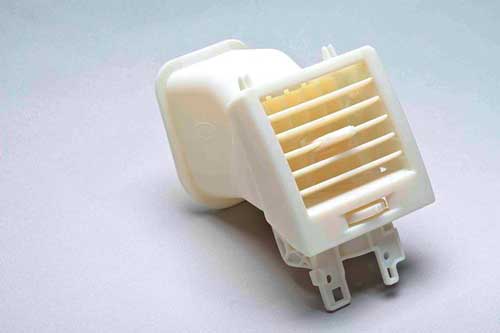"Back to the Future" for Prototypes
How expectations for your prototype part has changed and will change in the future.
Latest News
December 1, 2011
By Bruce Bradshaw
Editor’s note: This commentary was sponsored as part of DE’s Visionary Voices section.
Forget about going to 1955 in a DeLorean, even 10 years ago the needs and requirements of your prototype parts where relatively simple: a part that required some post processing to get it to function and resemble your final part. Your expectations of the material used in the prototype where not that stringent either. You just wanted a plastic part to review your design. What’s more, you probably got your prototype from the local service bureau and never envisioned you’d have prototyping technology that was cost effective enough to bring in house.
Today, most organizations either have one or two prototyping technologies under their roofs, or are at least looking seriously at bringing a 3D printer in to take more control of the design process. The desktop 3D printers of today deliver far superior quality than what you got 10 years ago when you outsourced, and the higher-end 3D printers allow you to get a host of material properties that resemble elastic rubber like polypropylene and high-temperature materials for “under the hood” applications.

Printing Two Materials at Once
Cutting-edge technology like Objet’s Connex 3D printers enbale simultaneous printing of two base materials allowing users to get as many as 14 different mechanical properties in the same part. Jetting of two materials also solves an issue that has plagued materials in other technologies. Prior to the Connex, you had to choose between using a high-temp resistant material that was often brittle vs. a tough material that did not have a good heat deflection measurement. By combining two materials into a single part you effectively can get the best of both worlds—a part that has a high-heat deflection (up to 95C after post curing) along with a part that proves as tough as an ABS molded part.
All of this cool stuff sounds great, but what will your requirements be 10 years from now? We are already seeing requirements in the medical field that some might consider space age—like jetting of human tissue or producing a titanium part from a 3D printer that can be used directly for a knee replacement. In the commercial world, personalized “on-demand” products for industries like shoes and other sporting goods is a very real requirement. 3D printers may help companies meet their customer requirements if the speed and material properties are advanced enough.
More Performance Gains to Come
What’s reassuring for 3D printer manufacturers and the users of 3D printers are the advancements made in print head technology. 3D printers leverage the print heads developed for the 2D printer world for wide-format printers, and we already see huge leaps in performance happening to print heads that could easily be adopted for 3D printers. Performance gains of 20 times for print speeds are not unreasonable, and other variables like dot size can be regulated to help meet tomorrow’s requirements for sporting goods, shoes, medical and industrial applications that will become the demands of tomorrow.
The entry-level or hobbyist market is also heating up rapidly. The up-and-coming technologies seen at Maker Faires and other venues will also impact the future, but the question that will dictate the adoption rate for consumers will come from the material costs. Sure, this technology is cheap and you can assemble the printer in your garage—but is it more than a toy for the hobbyist? Only time will tell. What is a more likely scenario is we will see 3D printers popping up at office stores, allowing you to create 3D designs and hand them the file to print the idea that might make you millions.
Marty and Dr. Brown from 1985 would be amazed at what you can do today, but I am confident they would be absolutely blown away but what the future holds. A 3D printer that allows them to print their time machine in a day, with the flux capacitor already in place? OK, maybe that’s a little far fetched, but you get the point. 3D printers of tomorrow will produce things we can’t even imagine, but as we’ve seen so often, nothing is certain and there are multiple courses with endless limitations.
Bruce Bradshaw is Objet’s Director of Marketing.
Subscribe to our FREE magazine, FREE email newsletters or both!
Latest News
About the Author
DE’s editors contribute news and new product announcements to Digital Engineering.
Press releases may be sent to them via [email protected].






